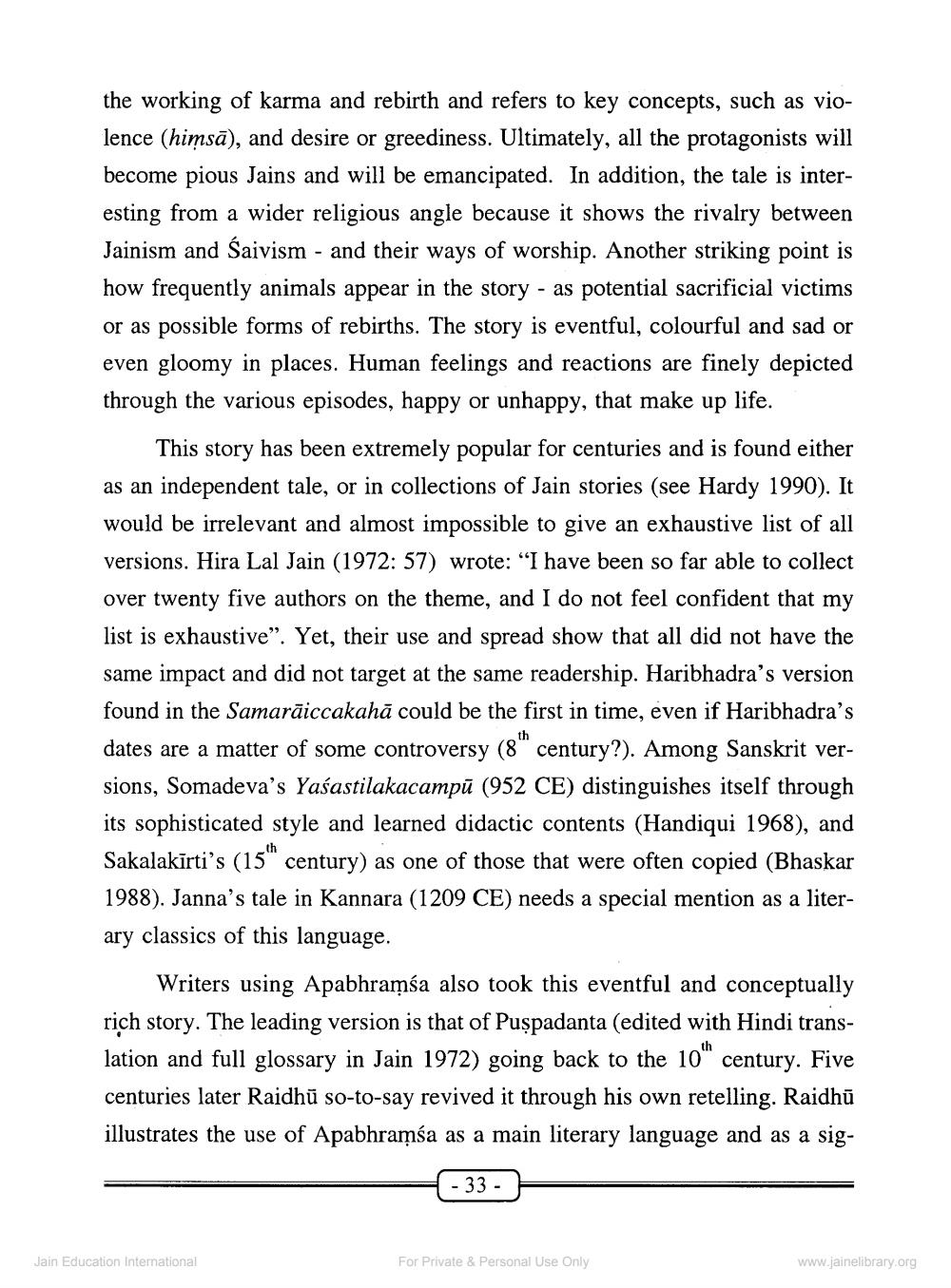________________
the working of karma and rebirth and refers to key concepts, such as violence (himsā), and desire or greediness. Ultimately, all the protagonists will become pious Jains and will be emancipated. In addition, the tale is interesting from a wider religious angle because it shows the rivalry between Jainism and Saivism - and their ways of worship. Another striking point is how frequently animals appear in the story - as potential sacrificial victims or as possible forms of rebirths. The story is eventful, colourful and sad or even gloomy in places. Human feelings and reactions are finely depicted through the various episodes, happy or unhappy, that make up life.
This story has been extremely popular for centuries and is found either as an independent tale, or in collections of Jain stories (see Hardy 1990). It would be irrelevant and almost impossible to give an exhaustive list of all versions. Hira Lal Jain (1972: 57) wrote: “I have been so far able to collect over twenty five authors on the theme, and I do not feel confident that my list is exhaustive”. Yet, their use and spread show that all did not have the same impact and did not target at the same readership. Haribhadra's version found in the Samarāiccakahā could be the first in time, even if Haribhadra's dates are a matter of some controversy (8” century?). Among Sanskrit versions, Somadeva's Yaśastilakacampū (952 CE) distinguishes itself through its sophisticated style and learned didactic contents (Handiqui 1968), and Sakalakīrti's (15" century) as one of those that were often copied (Bhaskar 1988). Janna's tale in Kannara (1209 CE) needs a special mention as a literary classics of this language.
Writers using Apabhramsa also took this eventful and conceptually rich story. The leading version is that of Puşpadanta (edited with Hindi translation and full glossary in Jain 1972) going back to the 10" century. Five centuries later Raidhū so-to-say revived it through his own retelling. Raidhū illustrates the use of Apabhramśa as a main literary language and as a sig
- 33 -
Jain Education International
For Private & Personal Use Only
www.jainelibrary.org




